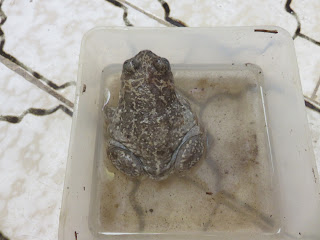Visiting Salisbury
I recently had the pleasure of visiting the city of Salisbury in Wiltshire for a few days and fell in love with the place. I was happy to see that wildlife is thriving here, despite increasing declines in species throughout much of the UK.
Cinnabar Moth caterpillars (Photo: Steve Andrews)
Avon Valley Local Nature Reserve
King Arthur Pendragon, Kazz and Chris Stone (Photo: Steve Andrews)
I was in Britain for Summer Solstice at Stonehenge and also visiting my friends, author Chris Stone, and Druid and eco-warrior King Arthur Pendragon and his partner Kazz. Arthur and Kazz live locally and they suggested we could go on a walk in the nature reserve that is on the banks of the River Avon. I love nature, so was happy to agree to their suggestion, and was very highly impressed with what I saw.
River Avon (Photo: Steve Andrews)
The River Avon looked really clean and there were very many fish that could easily be seen swimming in the current. I spotted Brown Trout (Salmo trutta), Minnows (Phoxinus phoxinus), and what looked like Dace (Leuciscus leuciscus).
A Shoal of Fish (Photo: Steve Andrews)
Meadowsweet (Photo: Steve Andrews)
There are extensive water meadows bordering the river too, and in the marshy ground was plenty of Meadowsweet (Filipendula ulmaria) in bloom. It has a most amazing perfume that reminds of summer meadows and freshly mown grass, and is a most beautiful herb that is actually in the rose family (Rosaceae).
As well as Meadowsweet, there were plenty of Creeping Thistles (Cirsium arvense) in flower, and also the very poisonous, but attractive to insect pollinators, Hemlock Water Dropwort (Oenanthe crocata). Kazz spotted a colourful moth feeding on the nectar from this dangerous plant, and she asked me what it was. It was a Scarlet Tiger Moth (Callimorpha dominula), a pretty moth that flies by day, and is of interest because it is unusual for being able to feed. Most other species of tiger moths have no mouth-parts and do all their feeding as larvae.
Scarlet Tiger Moth (Photo: Steve Andrews)
On the thistles I saw several Small Tortoiseshell (Aglais urticae) butterflies. This was a good sign because this once common species has been declining fast in the UK over the past few years. There were plenty of clumps of Stinging Nettle (Urtica dioica) growing nearby, and this is its main food-plant for its caterpillars.
Small Tortoiseshell on Thistle (Photo: Steve Andrews)
Water Voles
Avon Valley Info Board (Photo: Steve Andrews)
Near a bridge over the Avon there was an information board showing species of wildlife that can be found on the reserve. I was happy to see the Water Vole (Arvicola amphibious) included. This is a British mammal that has become increasingly rare, so it was very good news to see that it is holding its own here. Kingfishers (Alcedo atthis) too frequent the area I learned, and I was not surprised, because it is an ideal habitat with plenty of small fish they can hunt.
I also went for an evening stroll with Chris around Salisbury and around the area outside Salisbury Cathedral. The atmosphere was calm and peaceful and it was a glorious summer evening. I was really impressed with how there was no litter to be seen, no graffiti, and no damage to trees of the city, unlike elsewhere in the UK, where trees are being felled with the support of local councils. How is it that Salisbury doesn’t appear to have the problems other towns and cities have I wondered? “I would love to live in Salisbury,” I told Chris. “I think you will find properties here are very expensive,” he told me. He also pointed out that Salisbury is a Tory stronghold, and suggested that might have something to do with how it is there. He was right that houses and flats in the city are very expensive to buy and rent, and also that the Conservative party is in power there.






































